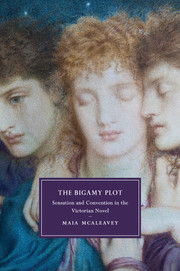Book contents
- The Bigamy Plot
- Cambridge Studies in Nineteenth-Century Literature and Culture
- The Bigamy Plot
- Copyright page
- Dedication
- Contents
- Illustrations
- Book part
- Introduction
- Part I A wife and not a wife
- Part II Dead yet not dead
- Part III Sensational and canonical
- Coda: the end of bigamy
- Book part
- Notes
- Bibliography
- Index
- Cambridge Studies in Nineteenth-Century Literature and Culture
- References
Bibliography
Published online by Cambridge University Press: 05 May 2015
- The Bigamy Plot
- Cambridge Studies in Nineteenth-Century Literature and Culture
- The Bigamy Plot
- Copyright page
- Dedication
- Contents
- Illustrations
- Book part
- Introduction
- Part I A wife and not a wife
- Part II Dead yet not dead
- Part III Sensational and canonical
- Coda: the end of bigamy
- Book part
- Notes
- Bibliography
- Index
- Cambridge Studies in Nineteenth-Century Literature and Culture
- References
- Type
- Chapter
- Information
- The Bigamy PlotSensation and Convention in the Victorian Novel, pp. 216 - 230Publisher: Cambridge University PressPrint publication year: 2015



